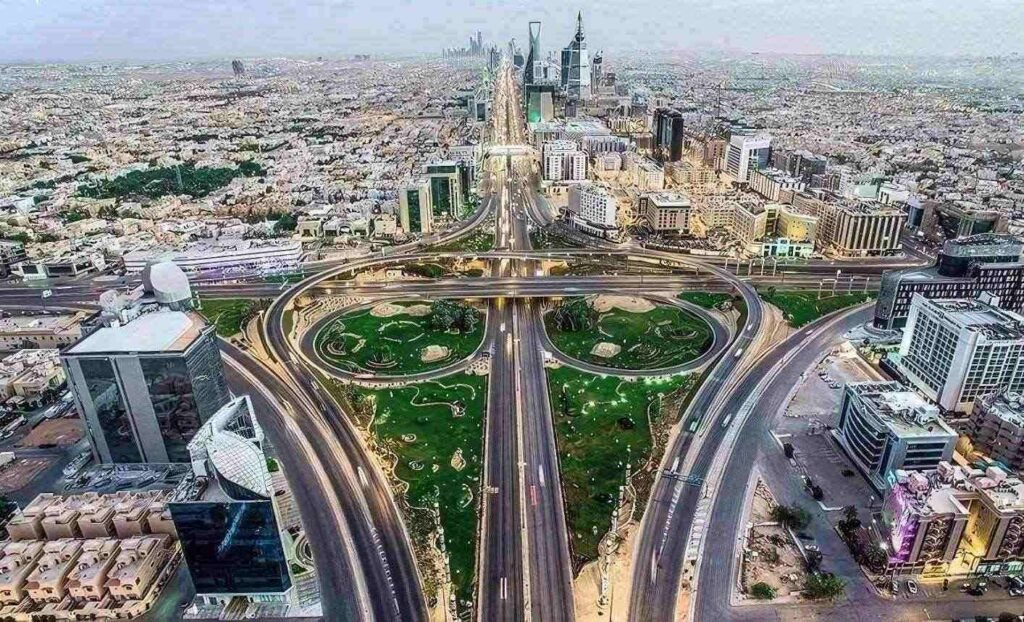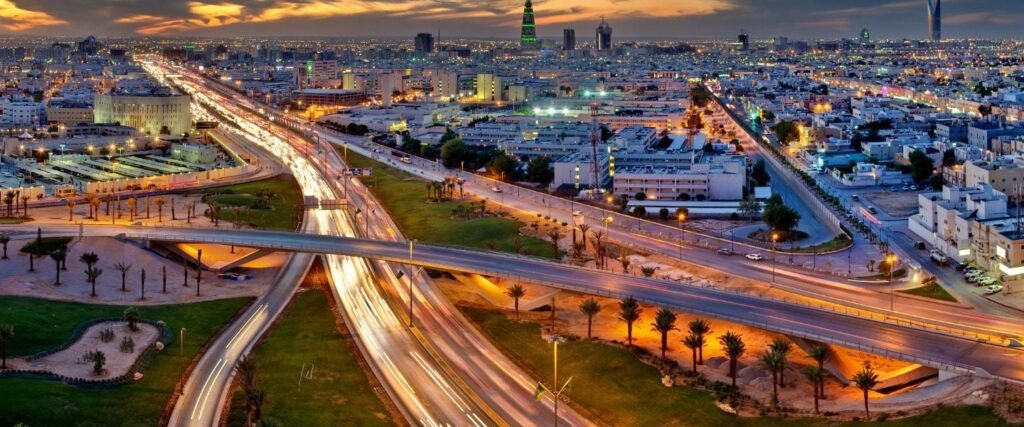Saudi Arabia transport expansion plans are taking center stage as the Kingdom pushes forward with its ambitious Vision 2030 strategy. With massive investments, futuristic technologies, and large-scale infrastructure upgrades, the country is transforming its transport network to become a global hub for mobility, tourism, and trade.
This article explores Saudi Arabia’s sweeping plans to revolutionize its transport system, the key projects in the pipeline, and how this transformation will impact citizens, visitors, and the global economy.
The drive behind Saudi Arabia transport expansion
Saudi Arabia has always relied heavily on oil revenues to sustain its economy. However, with Vision 2030, the Kingdom aims to diversify its income sources, reduce dependence on oil, and create new opportunities for growth. A modern and efficient transport system is central to this vision.

Transport is not just about moving people and goods; it is the backbone of economic development. Improved connectivity attracts investors, boosts tourism, creates jobs, and enhances the overall quality of life. Saudi Arabia’s leadership understands this and is investing hundreds of billions of dollars to create a world-class transport network.
Major projects fueling Saudi Arabia transport expansion
Riyadh Metro: The heartbeat of urban mobility
At the heart of Saudi Arabia transport expansion is the Riyadh Metro, one of the largest urban transit projects in the world. With six lines covering around 176 kilometers and nearly 85 stations, the Riyadh Metro is expected to reduce traffic congestion, lower emissions, and provide a comfortable, efficient mode of transport for millions.

Once fully operational, the Metro will significantly improve daily commutes, offering a reliable alternative to private cars in a city known for its heavy traffic.
King Salman International Airport: The new global gateway
The Kingdom is also developing King Salman International Airport, designed to become one of the largest airports globally, with a capacity to handle 120 million passengers annually by 2030 and 185 million by 2050. This massive upgrade is intended to strengthen Saudi Arabia’s position as a global transit hub.
The new airport will support tourism, attract foreign investments, and create tens of thousands of jobs, playing a vital role in Saudi Arabia transport expansion efforts.
Neom’s futuristic mobility vision
One of the most ambitious projects under Vision 2030 is Neom, a $500 billion smart city that promises to redefine urban living. Neom’s transport plan includes
The Line, a 170-kilometer linear city with no cars, streets, or carbon emissions. Instead, high-speed underground transit will enable residents to travel end-to-end in just 20 minutes.
Flying taxis and autonomous vehicles. Neom is exploring cutting-edge technologies to offer seamless, zero-emission travel.
Smart ports and logistics hubs designed to improve global trade efficiency and boost Saudi Arabia’s maritime industry.
These projects embody the futuristic side of Saudi Arabia transport expansion and illustrate the country’s commitment to innovation.
Rail network expansion: Connecting cities and regions
Another critical part of Saudi Arabia transport expansion is the railway sector. The Saudi Railways Organization and Saudi Railway Company are working on new lines to connect major cities and economic hubs, including
The North-South Railway, already operational, connects Riyadh to the northern mining regions and the Jordanian border along a 2,750 km line.
Haramain High-Speed Railway, linking Mecca and Medina, facilitates fast and comfortable travel for pilgrims and tourists.
The Land Bridge project, a future railway that will connect the Red Sea to the Arabian Gulf, dramatically cutting freight transport times.
By expanding its rail network, Saudi Arabia aims to reduce heavy reliance on trucks for freight and encourage eco-friendly mass transit.

Public transport improvements across major cities
Beyond Riyadh, cities like Jeddah, Mecca, and Medina are also seeing upgrades as part of Saudi Arabia transport expansion. Plans include
Jeddah Metro, currently in development, aims to address severe traffic congestion and provide residents with sustainable transport options.
Mecca public transport, including new bus networks and improved transit facilities to support the millions of pilgrims who visit every year.
Medina upgrades, with modern buses and smart transport hubs designed to serve both residents and religious tourists.
These efforts not only reduce environmental impact but also improve quality of life by making urban centers more livable and accessible.
Road infrastructure: Building a stronger foundation
Saudi Arabia already has one of the largest road networks in the Middle East, but as part of its expansion plans, the Kingdom is investing in new expressways, smart highways, and road safety improvements. Key initiatives include
Developing smart traffic management systems to reduce accidents and improve flow.
Upgrading rural roads to connect smaller towns and support regional economic growth.
Building new highways to improve cross-border trade with neighboring Gulf countries.
Better roads mean faster, safer, and more efficient transport for both people and goods.
Maritime and port developments
Saudi Arabia’s strategic location along the Red Sea and Arabian Gulf makes it a natural maritime powerhouse. The transport expansion strategy includes major upgrades to ports, such as
Jeddah Islamic Port expansion to increase capacity for handling larger cargo volumes and support economic diversification.
King Abdullah Port enhancements, adding more terminals and advanced logistics facilities to compete with global ports.
New logistics zones to develop integrated hubs that facilitate smooth cargo movement and attract international trade.
These investments aim to position Saudi Arabia as a leading logistics hub between Asia, Africa, and Europe.
Air transport growth beyond airports
Besides King Salman International Airport, other airports across the Kingdom are also undergoing modernization. Examples include
King Abdulaziz International Airport in Jeddah, which recently completed its massive new terminal, enhancing capacity and services.
Prince Mohammed bin Abdulaziz Airport in Medina, expanded to support religious tourism growth.
Regional airports with improvements to serve smaller cities and encourage domestic tourism.
Expanding air connectivity supports economic diversification and strengthens Saudi Arabia’s goal of attracting 100 million annual visitors by 2030.
Environmental impact and sustainability goals
Saudi Arabia transport expansion is not only about growth but also about sustainability. The Kingdom aims to
Cut carbon emissions by introducing electric buses, trains, and other green solutions.
Reduce car dependence through integrated public transport.
Develop smart infrastructure that uses data to optimize energy and resource use.
These initiatives align with Saudi Arabia’s Green Initiative, which targets net-zero emissions by 2060 and reflects the country’s commitment to environmental stewardship.

Economic and social benefits of Saudi Arabia transport expansion
The massive transport transformation will bring wide-ranging benefits, including
Job creation through new projects that generate thousands of direct and indirect jobs in construction, operations, and maintenance.
Boost to tourism with better connectivity encouraging more tourists to explore the Kingdom’s historical and natural treasures.
Improved quality of life with easier, safer, and more reliable transport enhancing everyday living.
Investment attraction, as a modern transport network makes the country more appealing to international investors and businesses.
Stronger regional ties, with improved infrastructure supporting trade and relations with neighboring countries.
Challenges and how Saudi Arabia plans to overcome them
Despite the ambitious scope, Saudi Arabia transport expansion faces challenges, including
High costs that require careful financial planning and international partnerships.
Technical complexities, as advanced projects like Neom’s transport systems demand cutting-edge technologies and skilled talent.
Cultural adaptation, since encouraging people to shift from cars to public transport requires mindset changes and education.
The government is addressing these through public-private partnerships, global collaborations, and awareness campaigns to build trust and encourage adoption.
Vision 2030: The bigger picture
Saudi Arabia transport expansion is a key pillar of Vision 2030, which aims to diversify the economy and transform the Kingdom into a global hub for business, culture, and tourism. Transport plays a crucial role in connecting people and opportunities, thus enabling other sectors, from entertainment and sports to healthcare and education, to grow and flourish.
By 2030, Saudi Arabia envisions a country where citizens enjoy world-class mobility, visitors experience seamless travel, and businesses thrive with efficient logistics and connectivity.
Conclusion
Saudi Arabia transport expansion is more than a series of infrastructure projects; it is a vision for the future. From futuristic cities like Neom to high-speed trains and mega airports, the Kingdom is redefining what mobility means in the 21st century.
The ambitious investments reflect Saudi Arabia’s determination to open its doors to the world, empower its people, and build a diversified, sustainable economy. As these projects come to life, they will not only reshape the Kingdom but also inspire other nations to dream big and reimagine their transport systems.
Saudi Arabia’s journey toward becoming a global transport leader has begun, and it promises to be a transformative ride for the entire region and beyond.
Do follow UAE Stories on Instagram
Read More: Lincoln Rise Real Estate Dubai South: New Residential Project Launch














